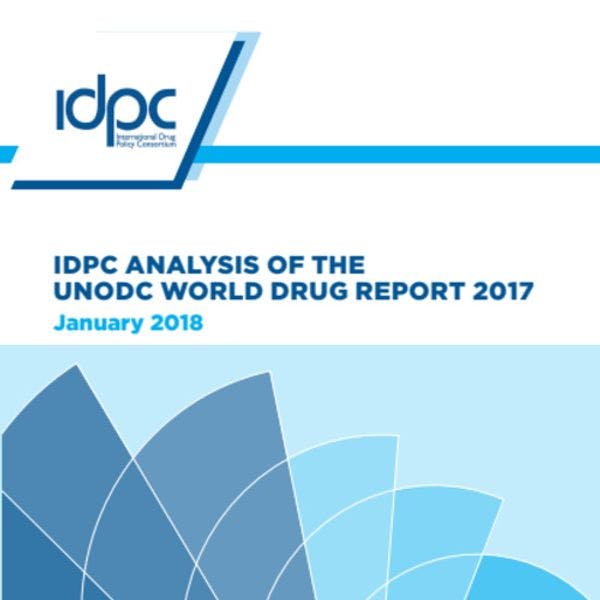IDPC analysis of the UNODC World Drug Report 2017
As has been the case in recent years, the World Drug Report for 2017 – the flagship publication of the United Nations Office on Drugs and Crime (UNODC or Office) - represents an impressive overview of the latest developments and trends in the world’s illicit drug markets, including in many instances linkages to the Sustainable Development Agenda (SDA) and specific Sustainable Development Goals (SDGs). A feat of data synthesis and analysis, the combination of a new five booklet format and interactive maps and data sets on the UNODC website arguably make the Report one of the agency’s most thorough and accessible publications, or publication packages to date.
Data within the Report are contextualised in terms of the operationalisation of the UNGASS Outcome Document agreed in New York in April 2016, and preparations for the high-level ministerial segment (HLS) at the 2019 Commission on Narcotic Drugs (CND). The policy context – particularly in relation to the HLS and work on some form of document to guide international drug policy for the next decade or so – may be somewhat different to previous years, yet many of the key conclusions and overarching themes are familiar.
Global markets remain dynamic and ‘thriving’ and are becoming increasingly complex and diversified in terms of production, trafficking and use. The previously dominant narrative of market stability, however, is not so obvious. In terms of headline figures, the Report informs us that an estimated quarter of a billion people – around 5% of the global adult population – used drugs at least once in 2015 and that about 29.5 million of those suffer from what the UNODC refers to as ‘drug use disorders’.
It is important to note, nonetheless, that while the Office’s analysis is increasingly sophisticated, there is an ongoing level of uncertainty linked to the paucity of data upon which this analysis is based, especially in relation to Africa and Asia. Such uncertainty pertains to both the state of drug markets and the nexus between the ‘drug problem’ and organised crime, illicit financial flows, corruption and terrorism. This topic is the focus of Booklet 5 – what would, in previous years, have been labelled the Report’s thematic chapter.
Previous reports in this series:
- IDPC response to the 2016 World Drug Report
- IDPC response to the 2015 World Drug Report
- IDPC response to the 2014 World Drug Report
- IDPC response to the 2013 World Drug Report
- IDPC response to the 2012 World Drug Report
- IDPC response to the 2011 World Drug Report
- IDPC response to the 2010 World Drug Report
- IDPC response to the 2009 World Drug Report
- IDPC response to the 2008 World Drug Report
- IDPC response to the 2007 World Drug Report
- IDPC response to the 2006 World Drug Report
Topics
Regions
Related Profiles
- United Nations Office on Drugs and Crime (UNODC)
